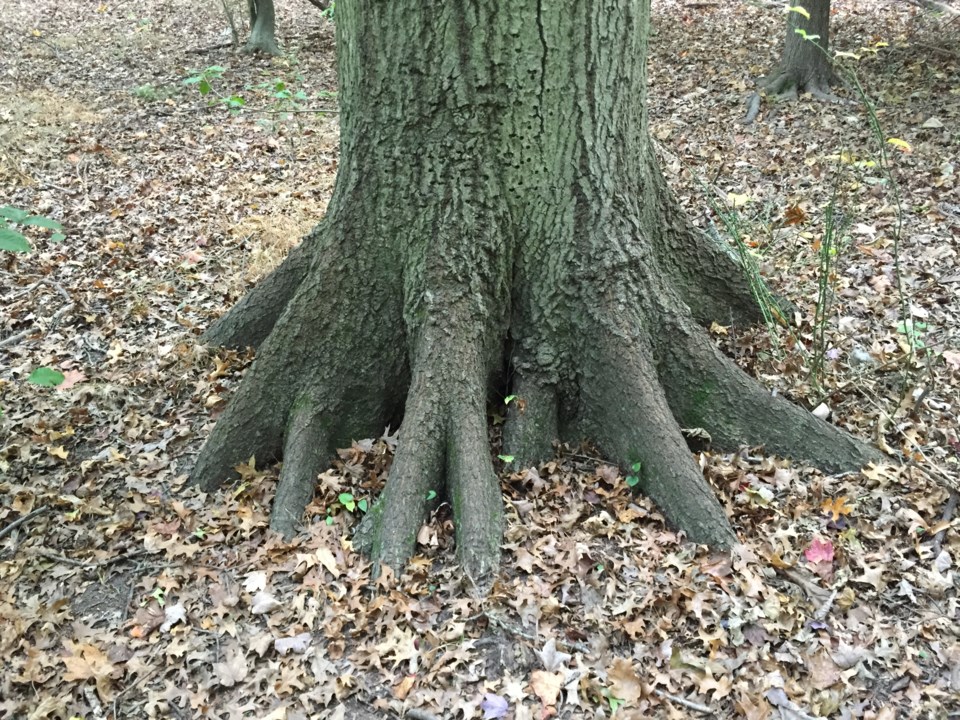Hey all you happy gardeners out there, don't let that spring smile turn upside down and turn into a frown because your tree died over the winter. Make sure when you are buying trees and shrubs their hardiness rating is Zone 1-3a. It’s usually written on the tag, but if it isn’t, that information is only a Google search away. If the cold hardiness rating goes above 3a, there’s a good chance that plant will not make it through a Saskatchewan winter. If the cold hardiness rating is listed as above 4, it definitely won’t make it through a prairie winter. Save your money and don’t buy those plants unless you’re moving to Ontario or British Columbia and are taking them with you.
Read the label. It doesn’t matter how good a gardener you are, the genetics of a plant determine everything from height to spread to leaf shape and colour including its ability to withstand the cold. Mother Nature always has the last word.
The next thing to ensure success is choosing the right tree for the space you have and then planting it in a way that gives it the best chance of survival and conditions to thrive and grow.
Right Tree Right Place
Believe it or not, trees can only grow to a certain size and spread. Every one of them is different, however their genetic maps prevent them from doing anything other than what the genetics allow them to do. So there are no surprises.
If you are planting under wires, you should choose a tree that when it hits its maximum height, it finishes out beneath the wire. If the power line is at approximately 25 feet, then consider only trees with a mature height of less than 25 feet. You can get this information from books, from the Internet and usually off the nursery tag as well.
If you are planting close to your house, check out and know the branch spread at maturity. By doing this you will avoid scraping your house or shingles with branches in the future.
Most city lots are about 50 feet wide. If you Google, Colorado spruce mature height and spread, you will find out that it can grow to height of 80 feet and spread of 20 feet here on the prairies. How many of those do you need on a city lot? Maybe one or maybe none.
How deep do I plant my new tree?
If you think about the last time you walked through a forest you may have noticed that every tree has a visible root flare.
Well, guess what? The seed fell from the branches and landed on the surface and if the conditions were good for germination, it germinated right there on the surface and it sent roots down from right there, on the surface. Eventually you would be able to see where the tree trunk transitions into the roots at the root flare or buttress. This is the level at which you should be planting your trees from the garden centre because Mother Nature gets the last word.
The number one planting mistake people make, and that causes trees to struggle to survive, and shortens their lives, is planting them too deep.
This means that when you are finished planting, you should see the top of the topmost root right at the surface. Planting deeper is not better. Planting like this is not only a lesson from nature, it encourages deep rooting.
The planting hole should be a little bit shallower and quite a bit wider with loosened soil, than the container the tree was in when you bought it. If you don’t see the root flare of the tree you just bought in the nursery pot, you must remove the soil from the top of the pot until you can see the top of the topmost root.
Place the tree in the hole. Straighten the tree. Remove all parts of the pot or any synthetic materials the root ball may have been wrapped in. Remove anything and everything that is wrapped around the trunk. Add the backfill soil and firm that soil to hold the root ball securely. Mulch the tree about three inches deep with organic (bark) mulch with little or no mulch contacting the trunk. Stake only if needed, prune only the dead or broken branches off. Get a beer or something and then water the tree.
Did ya know trees are made up of approximately 60 per cent water? Watering your trees is one of the best things you can do for them. If you don’t, Mother Nature will have the last word.
Did ya know, your lawn grass has an even higher water content and can have as much as 85 per cent water in its leaf blades. Watering your grass is critical to having a healthy lawn.
— Keith Anderson is executive director of the International Society of Arboriculture – Prairie Chapter




